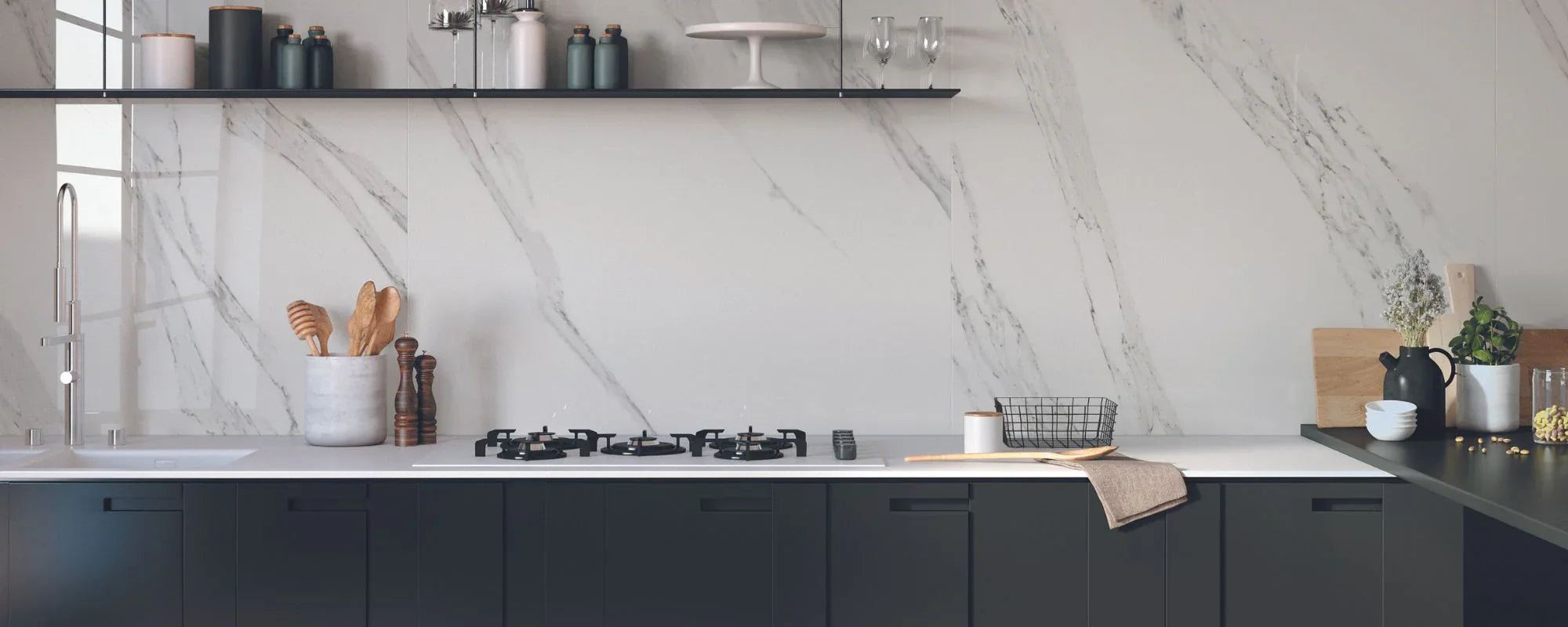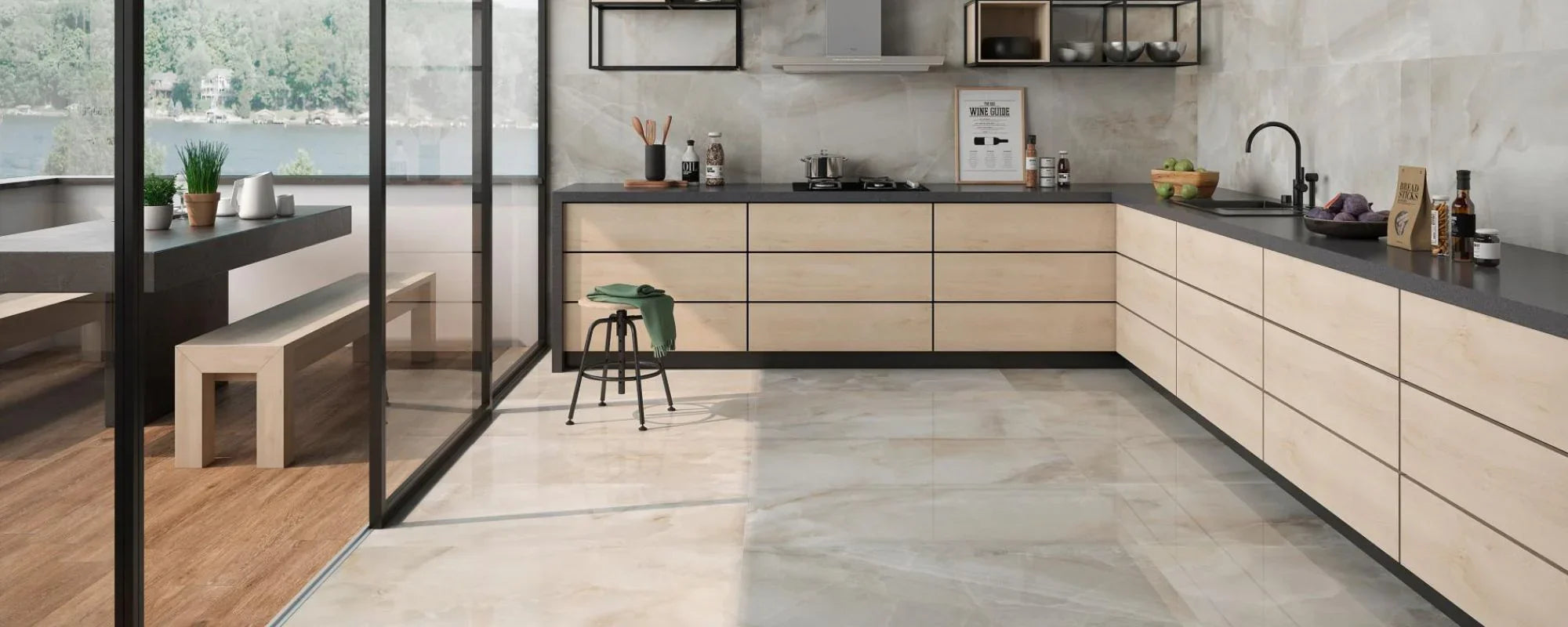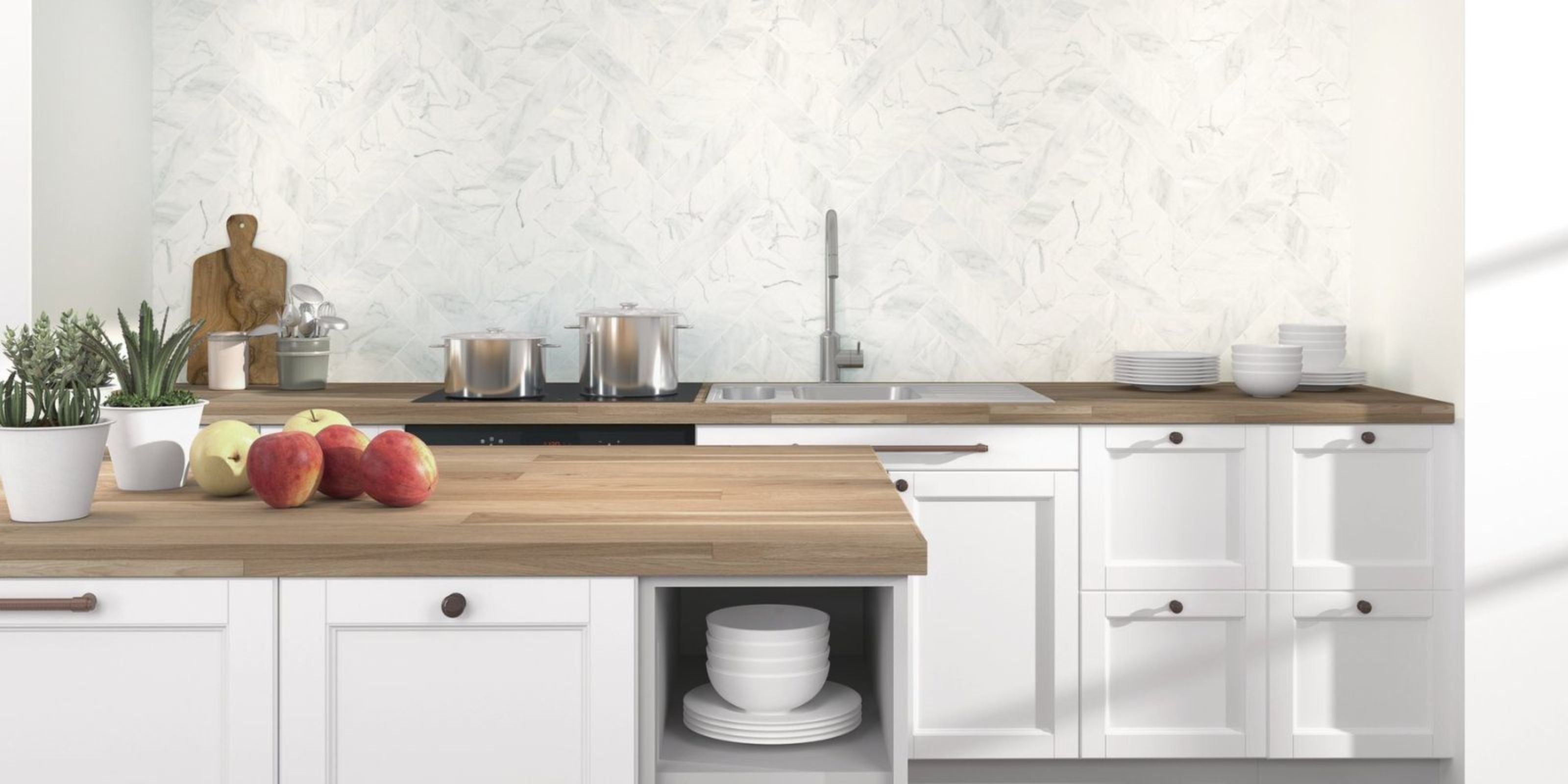
Kitchen Worktop Materials: What Should I Choose? An Expert Guide
Written by: Halima Bapu
Selecting the perfect natural material for your kitchen worktops is one of the most crucial decisions in any renovation or design project. Worktops aren’t simply surfaces, they’re the functional foundation of your kitchen and play a significant role in shaping the overall look and feel of the space.
In this comprehensive guide, we explore every major worktop material, including engineered stone, in detail, offering expert advice on their strengths, limitations, maintenance requirements, and design potential. Whether you’re a homeowner planning your dream kitchen or a designer working on a luxury project, this guide will help you make a well-informed choice.
Choosing kitchen worktops involves considering essential qualities such as durability, heat resistance, stain resistance, and ease of maintenance. With a wide range of kitchen worktop options available from natural stone to engineered stone and wood grains, you can find the best kitchen worktops that perfectly match your style preferences and practical needs. When comparing options, including quartz worktop pros t's important to consider which is the best kitchen worktop for your specific requirements, whether you prioritize durability, aesthetics, or budget.
Understanding the key factors that influence your decision, including cost effectiveness, longevity, and how well a material is highly resistant to stains and scratches, will ensure your kitchen worktops remain both beautiful and functional through everyday use and busy kitchens. Evaluating these aspects will help you determine the best material for your kitchen worktop, ensuring you make a choice that balances style, practicality, and long-term value.
Why Your Worktop Material Choice Matters
Kitchen worktops need to be both visually stunning and practical enough to withstand everyday life. From meal preparation to family gatherings, your worktops are constantly in use, making their material a central consideration.
Choosing the right heat resistant material affects not just the kitchen’s functionality, but also its longevity, ease of maintenance, and resale value. Equally important is how the worktop complements your cabinetry, splashbacks, flooring, and overall interior style. The choice you make will influence the overall ambiance of your kitchen, whether you prefer a sleek modern look, a warm traditional feel, or something uniquely eclectic. The worktop material you select plays a crucial role in defining your kitchen design, as it ties together the aesthetic and functional elements to create a cohesive space.
Additionally, selecting a high-quality, hard wearing kitchen worktop material can save you money and effort in the long run by reducing the need for repairs or replacements. Considering factors such as resistance to stains, scratches, heat, and moisture will help ensure your worktops remain beautiful and functional for years to come.
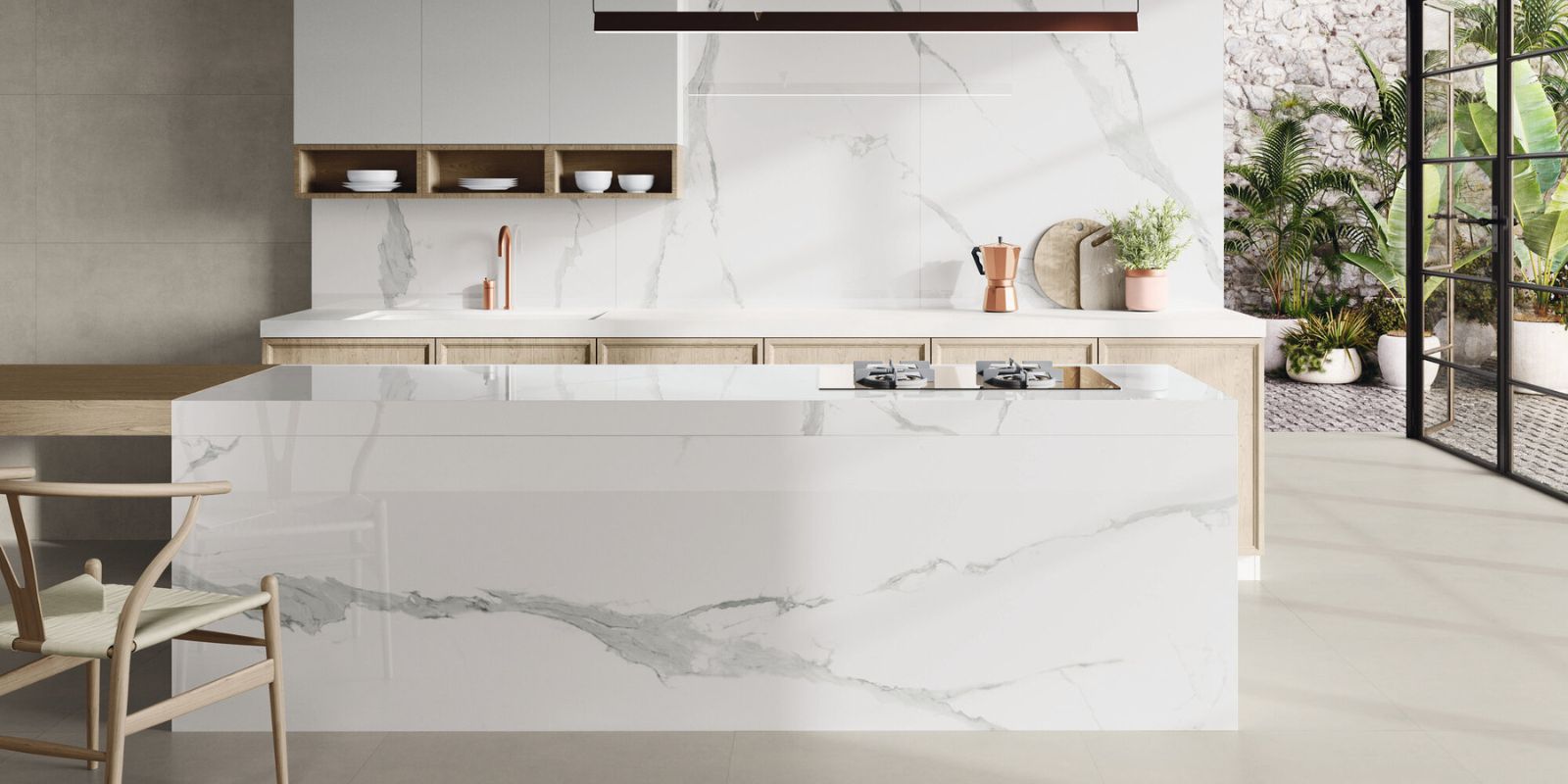
Natural Stone Worktops: Elegant Durability
Granite Worktops: Strength from Nature
Granite is highly sought after for its durability and natural beauty. Each slab is unique, featuring intricate veining and organic patterns that add character to any kitchen. Available in a wide range of colours and patterns, granite enhances visual appeal.
Though naturally heat and scratch resistant, granite is porous and requires sealing at installation and periodic resealing to prevent stains and bacteria. When properly sealed, it is water resistant and ideal for busy kitchens. It can withstand high temperatures, so hot pans won’t cause damage. Despite some maintenance, granite remains a popular choice for its long-lasting performance and timeless elegance.
Quartz Worktops: Engineered for Modern Life
Quartz worktops combine natural quartz crystals with resin to create a durable, non-porous surface. Engineered quartz may include other materials to enhance appearance and properties. Unlike granite, quartz doesn’t need sealing and resists stains and scratches, as well as bacteria. Its durability and design versatility make it ideal for busy family kitchens prioritizing hygiene and low maintenance. Cleaning with soapy water is recommended; harsh chemicals should be avoided.
Quartz offers consistent colouration, appealing to modern designs. Available in many shades and finishes, quartz suits seamless, minimalist aesthetics. However, quartz is also extremely durable, but it is sensitive to heat, so trivets are necessary to protect from hot pans.
Wooden Worktops: Warmth and Natural Character
Solid Hardwood: A Classic Choice
Hardwood worktops, such as oak, walnut, and cherry, provide kitchens with warmth, texture, and depth, offering a timeless appeal . Their rich tones and natural grain patterns suit both traditional and contemporary designs. Over time, hardwood develops a patina that enhances its rustic charm.
That said, solid wood worktops demand commitment to care. Regular oiling is required to prevent moisture penetration and warping. Scratches and surface marks are inevitable but can be sanded down and refinished, making hardwood a renewable and sustainable choice for homeowners who appreciate its evolving beauty.
Butcher Block: Rustic Practicality
Butcher block worktops, constructed from bonded strips of wood, offer a similar natural aesthetic to hardwood but with a slightly more casual, rustic appeal. Their tactile surface is ideal for food preparation and chopping tasks, though it's worth noting that this daily use will gradually mark the surface.
Ongoing maintenance is essential with butcher block. Spills should be wiped promptly, and regular oiling will help retain the worktop’s structural integrity and appearance. When paired with matching timber cabinetry or contrasting contemporary finishes, butcher block worktops can create a warm, welcoming atmosphere in any kitchen.
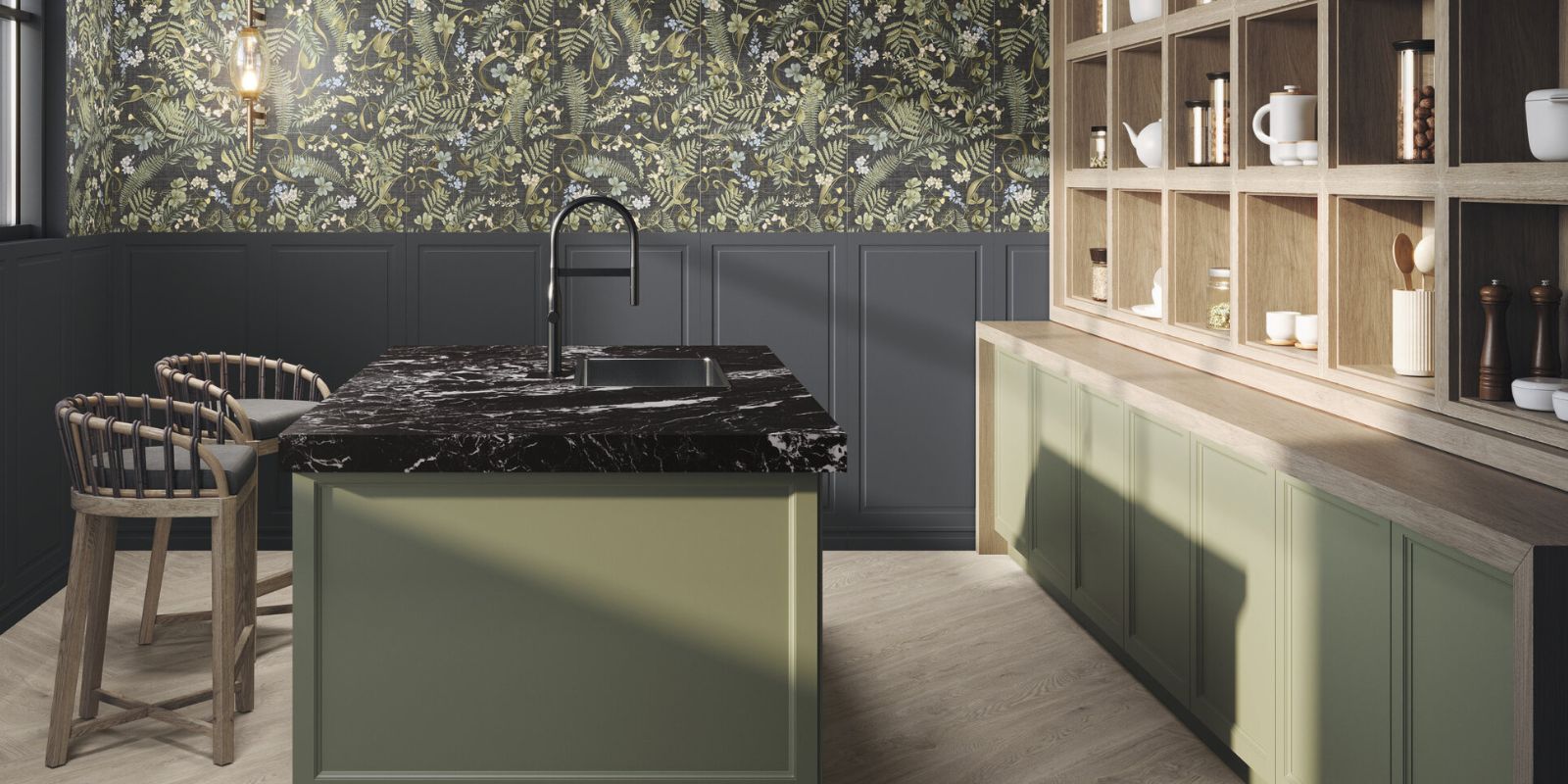
Composite and Laminate Worktops: Modern Solutions
Composite Stone: Durable and Design-Focused
Composite worktops are created from a blend of natural minerals and resins, unlike solid wood resulting in a surface that combines aesthetic versatility with outstanding durability. In many solid surface worktops, acrylic resins are used to enhance durability, create a non-porous surface, and allow for a seamless appearance. These worktops are non-porous, making them resistant to stains and bacterial growth, and they stand up well to everyday wear and tear.
Unlike natural stones, composite worktops offer consistency in pattern and colour, which appeals to those looking for a cohesive, uniform design. This consistency also enables a seamless look, with joints that are often invisible, providing a smooth, continuous surface. They’re also relatively heat-resistant, although like quartz, it’s advisable to avoid placing hot pans directly on the surface.
In contemporary kitchens where practicality and style need to coexist, composite worktops are a reliable and visually adaptable choice.
Laminate Worktops: Budget-Friendly Versatility
Laminate worktops are a practical solution for homeowners seeking affordable yet attractive surfaces. Made from layers of decorative paper and resin bonded to a chipboard core, laminate worktops are available in a wide variety of colours, patterns, and finishes, including those that replicate natural stone or wood.
Although laminate lacks the heat resistance and scratch durability of stone or composite materials, its low cost and ease of maintenance make it a popular choice for family kitchens or rental properties. Simply wiping the surface with a damp cloth keeps it looking clean and fresh.
Marble Worktops: A Statement of Luxury
The Unique Beauty of Marble
Marble worktops are synonymous with luxury. Each slab boasts unique veining and rich colour variations, and this individuality makes marble a showstopping feature in any kitchen.
However, marble comes with significant maintenance considerations. Softer and more porous than granite or quartz, marble is prone to staining, scratching, and etching from acidic foods and liquids. To preserve its beauty, it requires regular sealing and gentle cleaning practices, avoiding harsh cleaners . When properly maintained, marble countertops can retain their elegance and durability for many years.
Designing with Marble
Marble works best in kitchens where its aesthetic value outweighs its practical limitations. For those drawn to its timeless elegance, consider using marble selectively, perhaps on a kitchen island or as a statement splashback, while opting for more resilient materials elsewhere in the space.
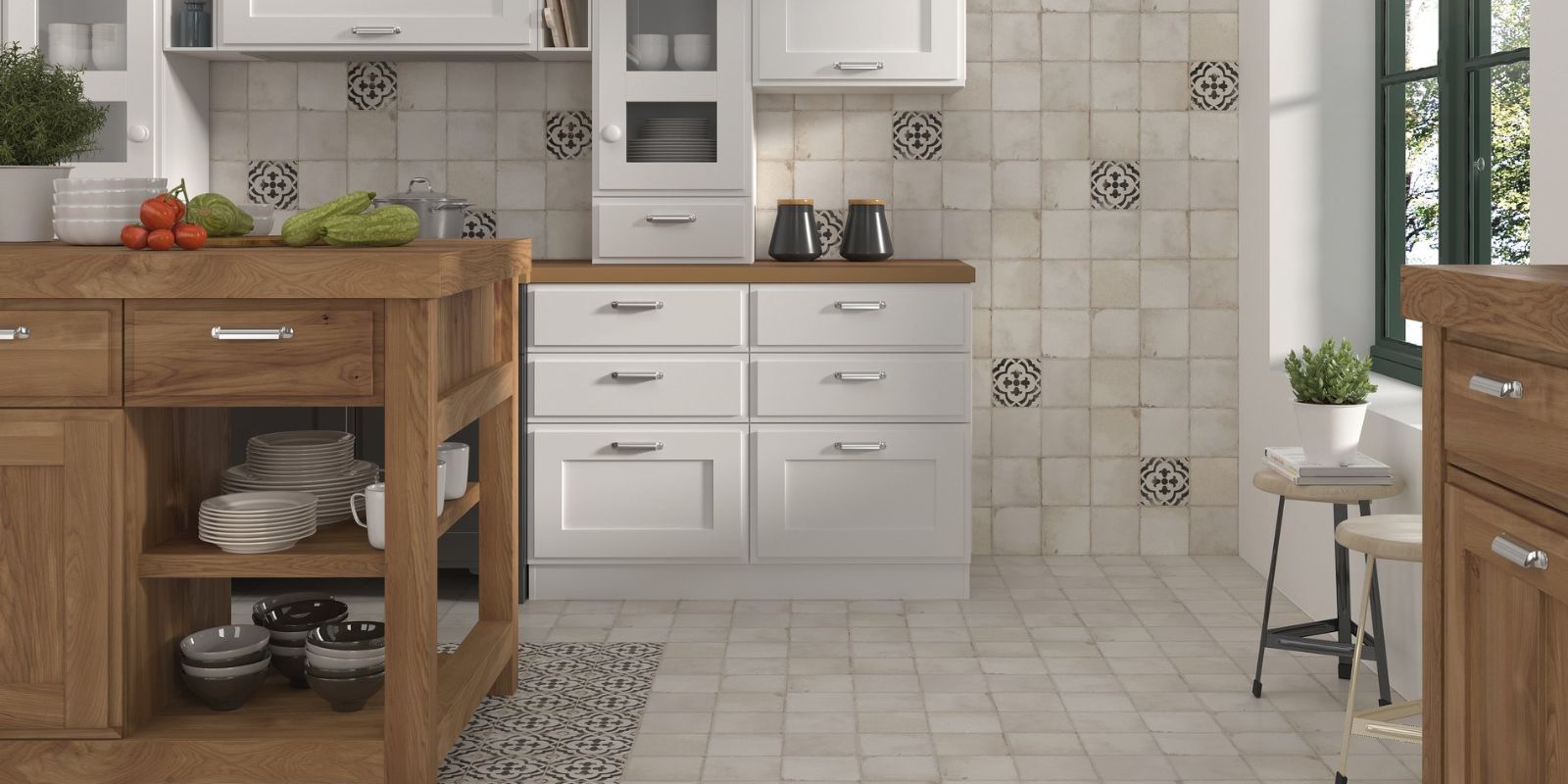
Exploring Specialist Materials for Unique Kitchens
Stainless Steel Worktops: Professional-Grade Performance
Favoured in commercial kitchens, stainless steel worktops bring industrial style and professional performance to modern homes. Heat-resistant, stain-proof, and antibacterial, stainless steel is a highly practical choice for serious home cooks.
However, it scratches easily and fingerprints show up readily. For those who appreciate an industrial, urban aesthetic, these characteristics often add to the material’s charm, creating a soft patina over time.
Concrete Worktops: Bespoke Minimalism
Concrete worktops provide a unique, architectural look, with each surface cast individually for bespoke designs. Their raw, tactile texture appeals to lovers of modern minimalism and industrial design.
While concrete is naturally porous, sealing it can protect against stains and moisture. Hairline cracks may develop over time, which some homeowners embrace as part of its character.
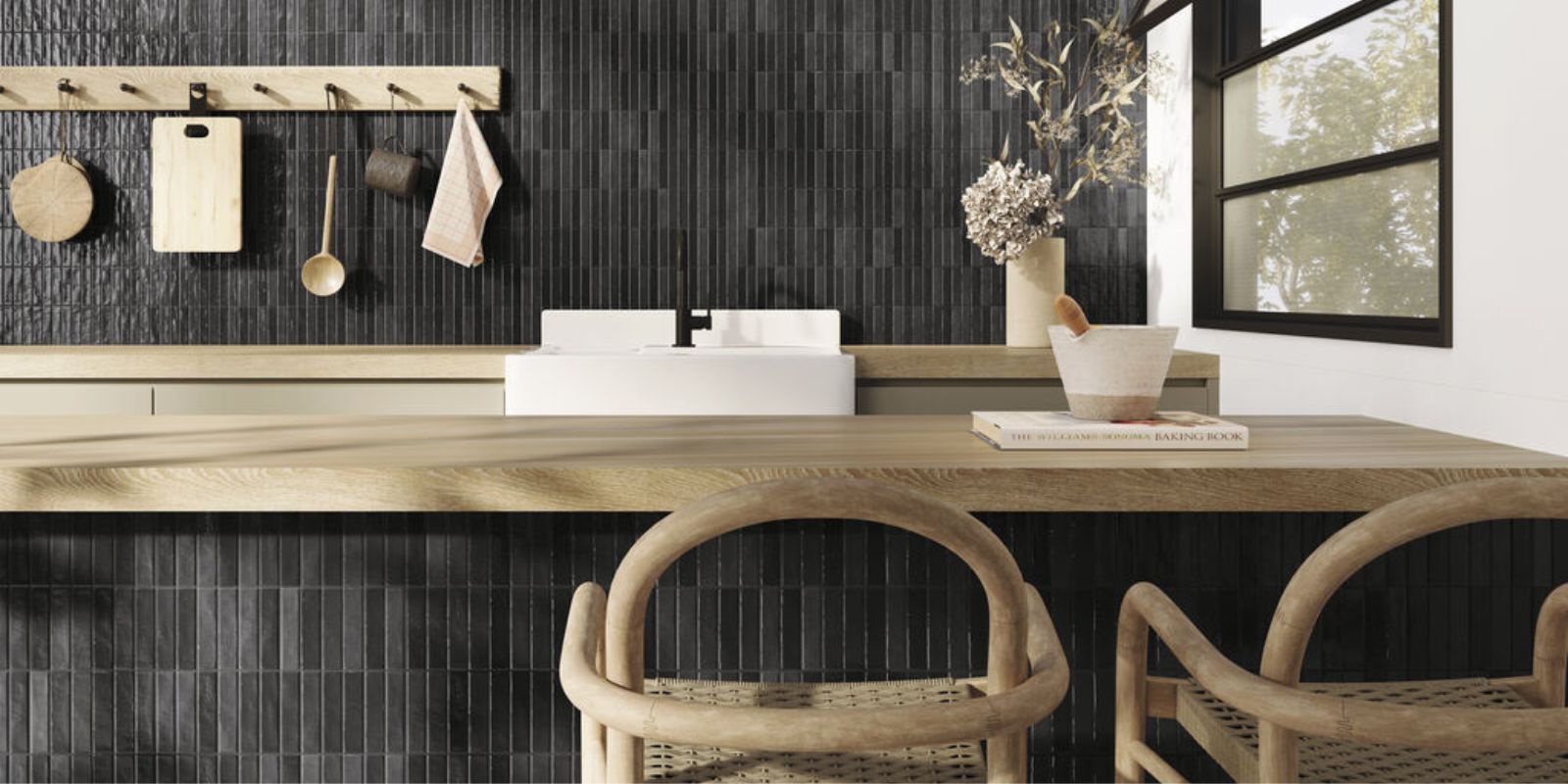
Worktop Thickness: Finding the Right Profile for Your Kitchen
When selecting your ideal kitchen worktop, thickness is more than just a technical detail, it’s a design statement that influences both the appearance and performance of your space. Worktops are typically available in thicknesses ranging from a sleek 20mm to a robust 40mm, with 30mm often striking the perfect balance for many homeowners. A thicker granite worktop, for example, can lend a sense of luxury and durability, making granite worktops a standout feature in both classic and contemporary kitchens. On the other hand, a 20mm quartz worktop offers a streamlined, modern look that’s perfect for minimalist designs.
The choice of thickness can also highlight the unique qualities of your chosen material. Wooden worktops with a thicker profile beautifully showcase natural wood grains, adding warmth and character to your kitchen. In contrast, thinner profiles are often preferred for laminate worktops, providing a cost-effective solution without compromising on style. Ultimately, your decision should reflect your kitchen’s overall design, your personal style, and the practical demands of your household. Whether you opt for the substantial presence of granite or the refined elegance of quartz, the right thickness will enhance both the durability and visual appeal of your kitchen worktop.
Worktop Edge Options: Shaping Your Worktop’s Style
The edge profile of your kitchen worktop is a subtle yet impactful way to define your kitchen’s style. With various edge options available, you can tailor the look to suit everything from modern to timeless interiors. The pencil edge, with its gently rounded top and bottom, offers a clean, contemporary finish. For classic elegance, the half-bullnose edge, curved on top and flat underneath, provides a soft silhouette, while the full-bullnose edge, rounded on both sides, adds luxury and comfort.
For a more sophisticated look, consider a bevelled or ogee edge, which add depth and visual interest. Note that some edge profiles suit specific materials better; granite and quartz worktops can accommodate many styles, while wood and laminate may have more limited options. Choosing the right edge enhances both functionality and style, ensuring your worktop reflects your design vision.





